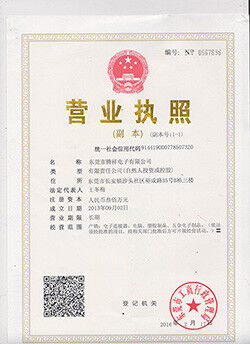4G LTE SMA Male Antenna Outdoor Fixed Bracket Wall Mount Aerial for 4G LTE Router Cellular GateWay Home Phone Modem
Feature
- Frequency Range: 698-960 MHz, 1710-2170 MHz, 2300-2700 MHz; Gain: 5dBi; Direction: Omni-directional; Waterproof: IP67; V.S.W.R: <2.0 ; Impendance: 50Ω
- Feature: Fixed Wall Mount; Through Hole Mount; Antenna Mounting Screws Diameter: M12, cable, and connector can be customized.
- Compatible with: Any 3G 4G LTE Cellular Router Camera Device, Just Make Sure the Connector Matches.
- Compatible with 3G 4G LTE Cellular Trail Camera, HCO Spartan HD GoCam Wireless Trail Camera, Covert Code Black Blackhawk Wireless Cellular Trail Camera, Hunting Camera, Outdoor Security Camera, Vehicle Car Truck RV Bus Van Mobile Cell Phone 4G LTE Router.
Electrical Specifications of Ultra-wideband fiberglass antenna
| Frequency range(Hz) |
698-960, 1710-2170, and 2500-2700 MHz. |
| Gain (dBi) |
5 |
| VSWR |
≤2.0 |
| Input impedance(Ω) |
50 |
| Polarization |
Linear |
| Lightning Protection |
DC Ground |
| Input connector type |
RPSMA Male or Requested |
| Mechanica Specifications |
| Dimensions(mm) |
|
| Openrating temperature(℃) |
—45~85 |
| Radome color |
Gray, Black, White |
Product Show:




UWB Antenna For Wireless Applications Technology
Ultra-wideband wireless technology is a short-distance, the most advanced wireless communication technology that uses bandwidths above 1 GHz and has low signal power spectral density.
The technology was first proposed by the US Department of Defense in 1989, and in April 2002, the Federal Communications Commission (FCC) issued preliminary specifications for UWB equipment. At present, UWB technology is gradually getting more and more applications in short-range wireless communication.
The definition of UWB includes any system that uses an ultra-wide spectrum. Any radio system is called an ultra-wideband system as long as it meets one of the following conditions:
In (1) and (2), fH and fL are the high-end frequency and low-end frequency of the transmission bandwidth, respectively.
Ultra-wideband wireless communication has the following characteristics:
(1) High transmission rate. Because the frequency band of the system is very wide, according to the Shannon channel formula, in the case of a low signal-to-noise ratio, the system can also achieve a transmission rate of several hundred megabits per second to 1 Gbit/s over a short distance.
(2) High positioning accuracy. Because of the use of very short-duration narrow pulses and strong temporal and spatial resolution capabilities, the multipath resolution of UWB signals is extremely high.
Ultra-wideband radio communication can integrate positioning and communication. Unlike GPS, which provides absolute geographic location, a signal in the form of a baseband narrow pulse can give a relative position, and its positioning accuracy can reach centimeter level.
(3) Sharing spectrum. Because the signal is spread over a wide spectrum, the power spectral density emitted by the system is very low, which is similar to background noise for other systems, so it can share the spectrum with other narrowband signals.
(4) Strong penetrating power. Because the baseband narrow pulse contains more low-frequency components, it can smoothly pass through the ground, concrete, water, and other media for detection.
Why choose us?
1. Hundreds of antenna products for optional, they are used for communication, IoT devices, security camera, smart home/city, automotive, medical, drone, etc.
2. We provide a solution for antennas, coaxial cables, and plastic parts by your requirements. With our in-house design, R&D, testing, and manufacturing.
3. More than 200 employees, and auto-assembly lines in the factory, no worries about the production capability.
4. By supplying our clients with high-quality products at competitive prices, we try to be all customer's partners and provide excellent services.

 Your message must be between 20-3,000 characters!
Your message must be between 20-3,000 characters! Please check your E-mail!
Please check your E-mail!  Your message must be between 20-3,000 characters!
Your message must be between 20-3,000 characters! Please check your E-mail!
Please check your E-mail! 





